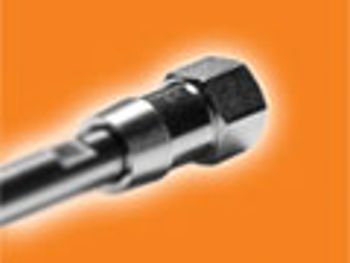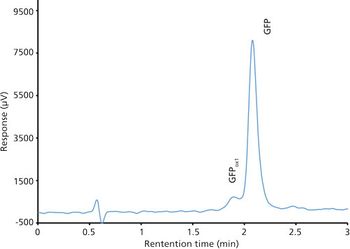
LCGC North America
Interfering peaks or high baseline background can compromise the results of gradient LC separations.

LCGC North America
Interfering peaks or high baseline background can compromise the results of gradient LC separations.

LCGC North America
Quantitative determination of the counterions associated with pharmaceutical salts is a mandatory requirement for quality control. While ion chromatography (IC) is the standard technique in most laboratories, capable of delivering excellent sensitivity, specificity and flexibility, there are other simpler and quicker analytical methodologies that may should be considered for this quality control application.

LCGC North America
Many gas chromatographers are not fully aware of safe practices for handling high-pressure gas cylinders. GC operators should be trained to properly transport, install, connect, and maintain their gas supplies, as well to deal with emergencies. In the first of a two-part series, this month’s GC Connections examines the principal hazards and safety issues surrounding the compressed gas cylinder. Next month’s installment will present safe procedures for routine cylinder use.

LCGC North America
Five simple pictures that reveal problems with your GC analysis – and how to fix them!

LCGC North America
This article describes the development of a HPLC method for the assay of green fluorescent protein (GFPuv) in-process samples from our model therapeutic protein production process. Specificity of the method is evaluated by demonstrating a suitable HPLC method to separate and detect closely related protein degradation species.

LCGC North America
Cartenoid compounds can be used as probes for studying the stationary bonded phases devoted for reversed-phase liquid chromatography, that is, C18, phenyl-hexyl, and cholester. From one analysis achieved in supercritical fluid chromatography (SFC) that favors the chromatographic behaviors due to the stationary phase properties, bonding density, ligand type (monomeric or polymeric), and endcapping treatment, two separation factors are calculated allowing us to build a bi-dimentional map. These two axes are related either to the shape selectivity or the polar surface activity (residual silalnos). Each point on the map corresponds to a column. The retention factor of beta-carotene, which describes the phase hydrophobicity, is indicated by the size of the point. More than 200 stationary phases were studied, including small particle sizes and superficially porous ones. Moreover, the results are now available on a website, allowing you to check and compare, by selecting the required tabs, columns, manufacturer brands, and ligand nature.

LCGC North America
This free software allows teachers to illustrate the basic principles of HPLC, such as chromatographic resolution, the van Deemter equation, and how to manipulate or adapt retention in reversed-phase HPLC.

LCGC North America
Click the title above to open the LCGC North America October 2016 regular issue, Vol 34 No 10, in an interactive PDF format.